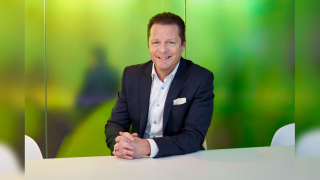Like most of us, Erik Sonnerskog, head engineer at Zsah Managed IT Services, starts his day by looking at his email for “new inquires, going over the days schedule of meetings, checking the logs to make sure there was no unexpected glitches or outages on any of the networks overnight”.
As a provider of managed cloud and IT services, Zsah offers its customers everything from cybersecurity, data and analytics to software as-a-service, meaning that communication and visibility over its networks are paramount.
“We have 24/7 surveillance so anything serious will have been dealt with already, but I like to make sure everything is running as it should,” adds Sonnerskog.
“As head engineer, I spend a large part of the day in meetings with partners and clients, I advise on suitable solutions for their needs and draft up quotes, proposals and tenders on what we can do for them. I then oversee and assist in setup, implementation, and monitoring to ensure our solutions and services are the best they can be for that client or partner.”
Given Zsah’s constant network monitoring and mission-critical role for the clients it serves, unsurprisingly Sonnerskog’s work does not end when the workday does.
“I tend to continue pondering architectural challenges after hours and sometimes the best solutions come to me when I am out walking the dog,” he says. “Even though my usual work hours are during the day, some parts of the job, like maintenance or upgrades, are always best done at night when system usage is at a minimum.”
But this work does not fall on one person’s shoulders. Sonnerskog and his team take turns being on call for emergencies, like unexpected outages.
“We know time is money in business and would never let our clients have downtime until office hours are back on if we can help it,” he explains.
Luckily tech and IT is a personal interest of Sonnerskog’s, so even in his down time he likes to “keep myself updated on new innovations and news, mostly through setting up small labs at home – open-source software lets you do a lot with old hardware you have lying around at home”.
Technology aside, he likes to switch off through recreational activities like wargaming and boardgames, “but over the last couple of years, I’ve taken up renovation as my primary time sink and I am currently redoing our second home together with my girlfriend. We also have two Swedish Vallhund dogs that we like to go hiking with”.
Sonnerskog has been with Zsah since 2010 – “for quite a long time” as he puts it – having entered the company just as adoption of virtualisation was growing, “so I see my career as strongly tied to that paradigm shift from bare metal to virtual everything – from servers to networking to security, and with that an increase in our ability to work remotely”.
This means that when the pandemic was widespread, “we had basically no need for regular data centre visits by our senior engineers, so we were all well prepared for the lockdown, all things considered”.
Somewhat of a thought leader in the space, Sonnerskog recently penned a piece detailing the four key considerations organisations should make when moving from legacy to cloud-native environments.
The first is to assess their organisation’s goals and expectations, to better understand what to gain.
He says that making a business case for cloud-native migration requires hard facts and financial projections as such a significant investment needs to be justified.
Next, they must evaluate what is needed to migrate. Some applications may not require modifying and can be migrated as-is, while others will need fundamental changes, all of which will affect project costs and timeframes.
Security is high on Sonnerskog’s list of priorities, but he says that it requires a different approach in cloud-native environments, advising that the best approach adopted by 41% of organisations is to embed security solutions throughout the software development cycle.
Sonnerskog says the final step is finding the right migration services partner – one that has extensive experience spanning years and different industries, and provides cloud hosting options that integrate your existing public cloud platforms as efficiently as possible.
Zsah may just be that partner, as it has just entered into new and exciting partnerships in Kubernetes and edge computing “that we are really looking forward to working on”.
“The companies we’re partnering with are both knowledgeable and innovative, so being able to provide their services together with our own will bring so much value to our customers,” Sonnerskog concludes.






